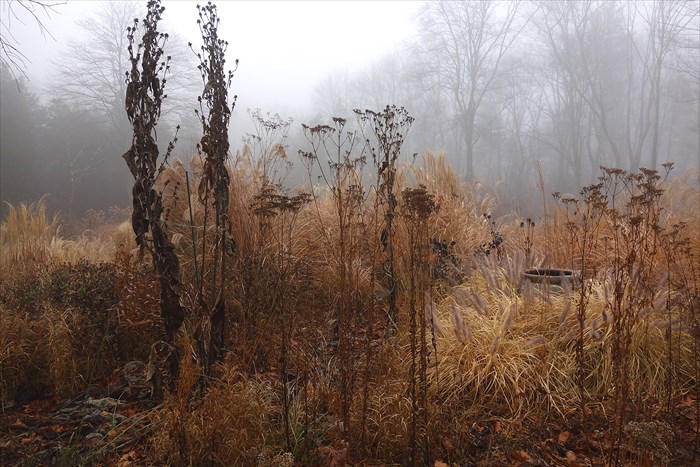In praise of weather

This being the first fall in three years the garden hasn't been trounced by early blizzard or hurricane, I'm thanking whatever powers may be for the aesthetic gifts of the weather--fog, rain, cloudy days, the low autumnal sun when the clouds let it through.Thursday morning, December 5, presented fog and a cloudy sky. Fog being a cue for a walk in the garden, I quickly threw on some clothes and headed out. We start outside the house, looking through the plantings that screen the high edge of the terrace, across the garden below, then descend to walk the paths of the main garden. Wanting light gathering power, I experimented with my Sony DSC-RX100, which has an extra large light sensor. I set it on aperture priority, to capture as much light as possible. and bracketed the white balance, which gave me three photos for every one I took. That resulted in some abrupt changes in colors you'll notice in the photos below.Moisture is a great friend of the senescent garden. Wetness, saturating the plant tissues, intensifies colors and color differences, making browns more brown, golden yellows more golden yellow, rust colors almost orange, even in low light. This plant grouping, largely self-seeded on the terrace above the garden, shows how dramatic this effect can be. Compared to the tall dark Inulas, you might think the Pennisetum 'Moudry' in the lower right is glowing from within.
Wanting light gathering power, I experimented with my Sony DSC-RX100, which has an extra large light sensor. I set it on aperture priority, to capture as much light as possible. and bracketed the white balance, which gave me three photos for every one I took. That resulted in some abrupt changes in colors you'll notice in the photos below.Moisture is a great friend of the senescent garden. Wetness, saturating the plant tissues, intensifies colors and color differences, making browns more brown, golden yellows more golden yellow, rust colors almost orange, even in low light. This plant grouping, largely self-seeded on the terrace above the garden, shows how dramatic this effect can be. Compared to the tall dark Inulas, you might think the Pennisetum 'Moudry' in the lower right is glowing from within. In close-up, it's even brighter. Hard to believe this was taken in very low light. (The black plant behind is Baptisia australis--what the voles didn't eat last winter.)
In close-up, it's even brighter. Hard to believe this was taken in very low light. (The black plant behind is Baptisia australis--what the voles didn't eat last winter.)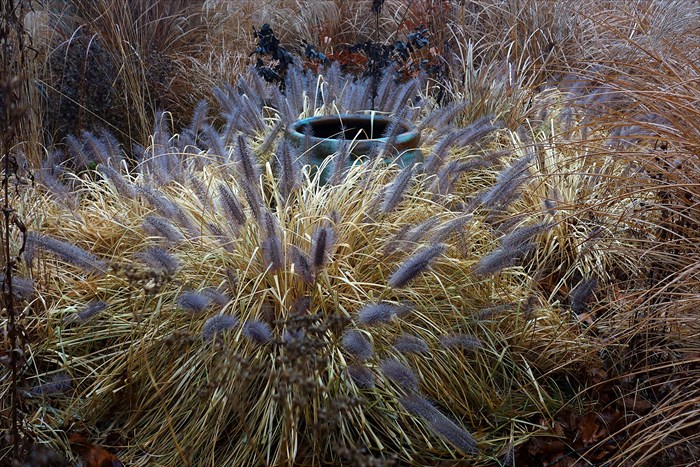 The glass-walled house and Adorandack chairs facing the garden and woods beyond.
The glass-walled house and Adorandack chairs facing the garden and woods beyond. Looking down to the canal-like pond, about forty feet long.
Looking down to the canal-like pond, about forty feet long.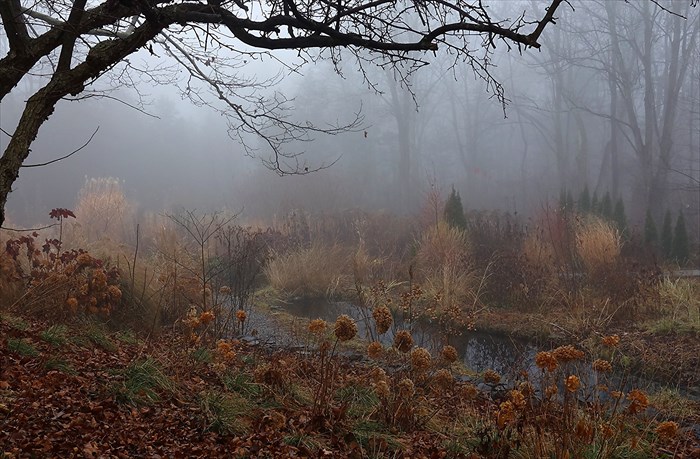 Down in the woodland garden at the side of the house. This area is elevated; the land surface drops as you walk into the main part of the garden.
Down in the woodland garden at the side of the house. This area is elevated; the land surface drops as you walk into the main part of the garden.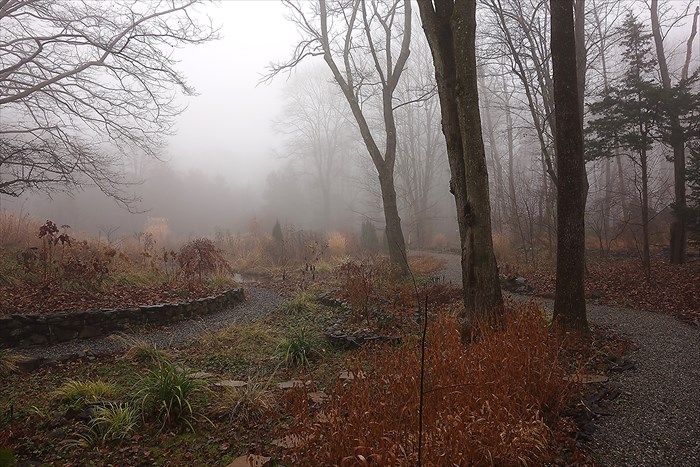
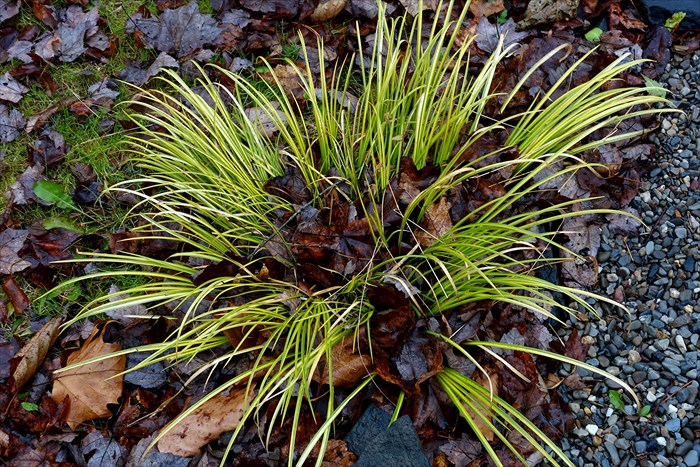
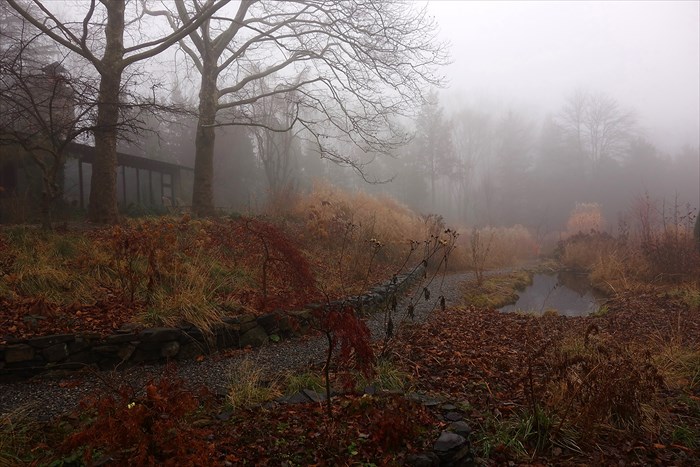 Continuing down the outer circumferential path, away from the house, I usually turn left to follow the main cross path, which intersects the outer path at the River Birch.
Continuing down the outer circumferential path, away from the house, I usually turn left to follow the main cross path, which intersects the outer path at the River Birch.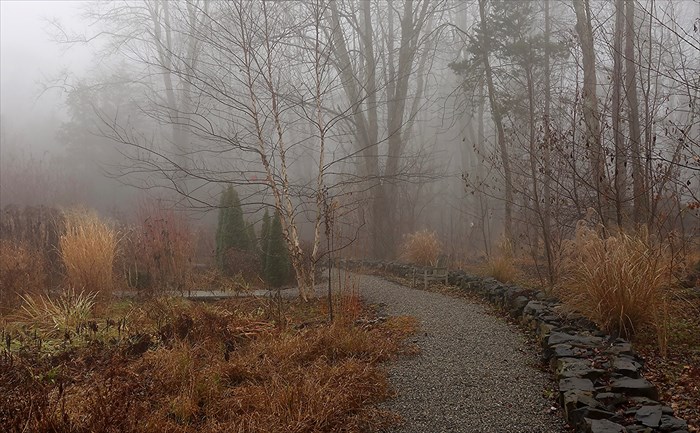
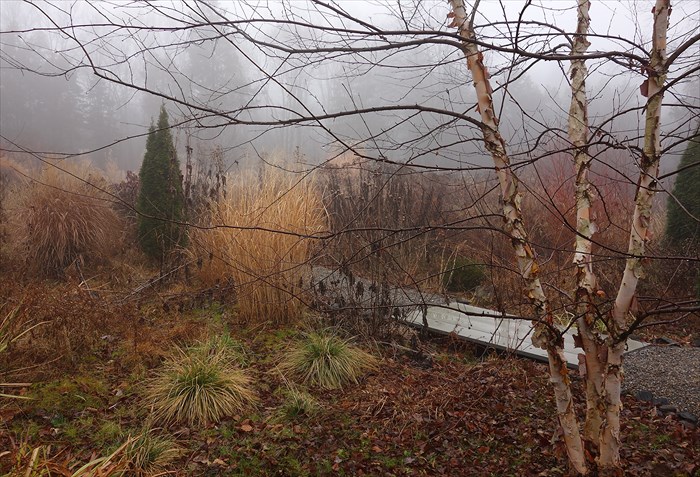
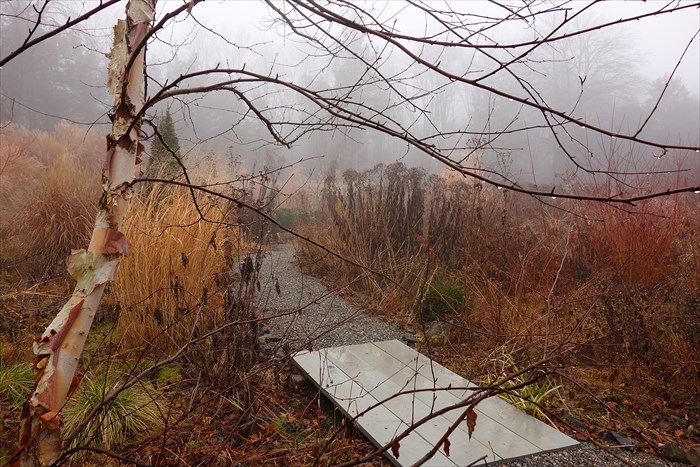 Structural remains of Lugularia japonica beside the golden lace of Panicum 'Cloud 9'.
Structural remains of Lugularia japonica beside the golden lace of Panicum 'Cloud 9'.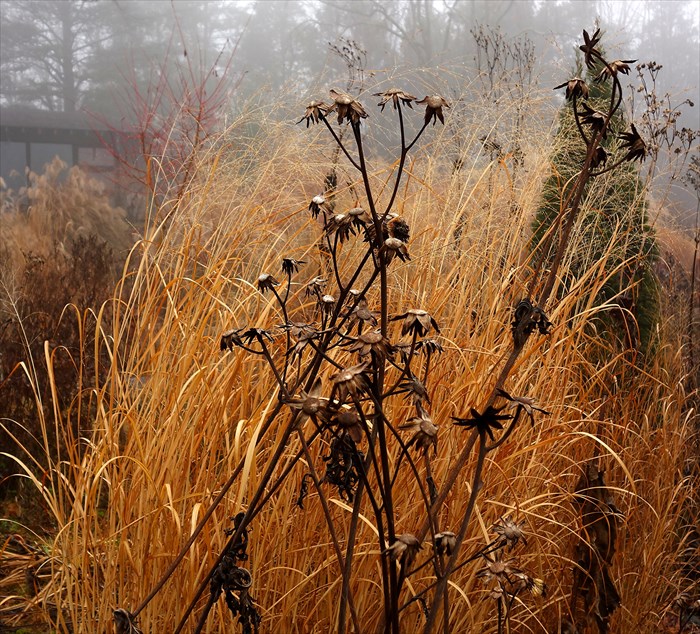
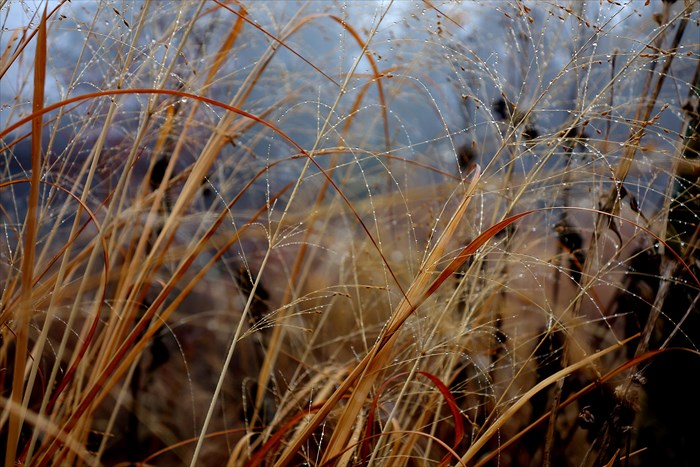 Tall Silphium perfoliatum and the Inula racemosa (seen above) add an intriguing gothic quality to the fall and winter garden, and they're magnificent in snow.
Tall Silphium perfoliatum and the Inula racemosa (seen above) add an intriguing gothic quality to the fall and winter garden, and they're magnificent in snow.

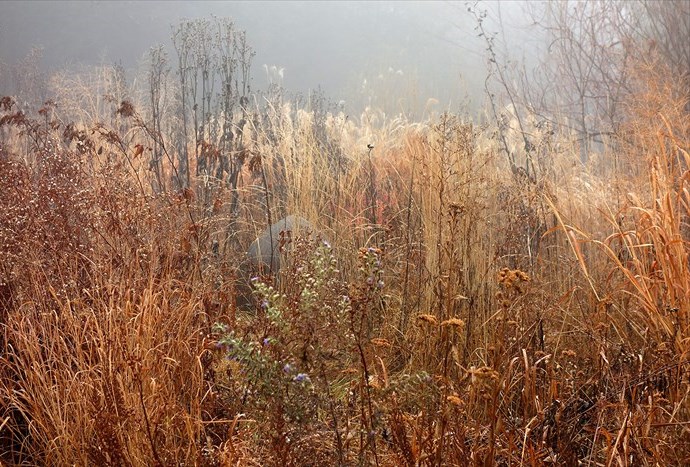
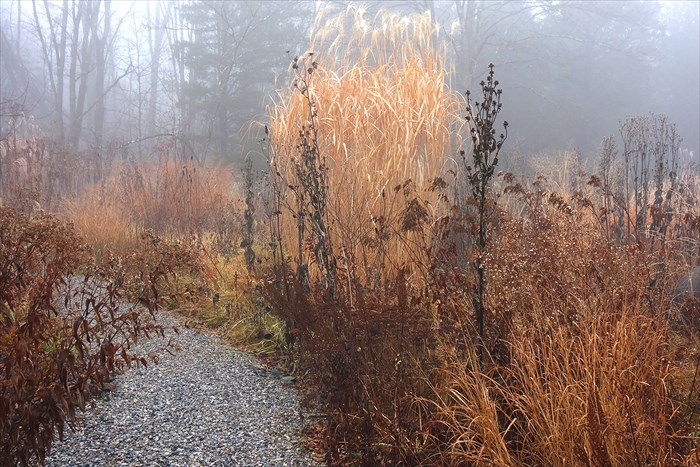
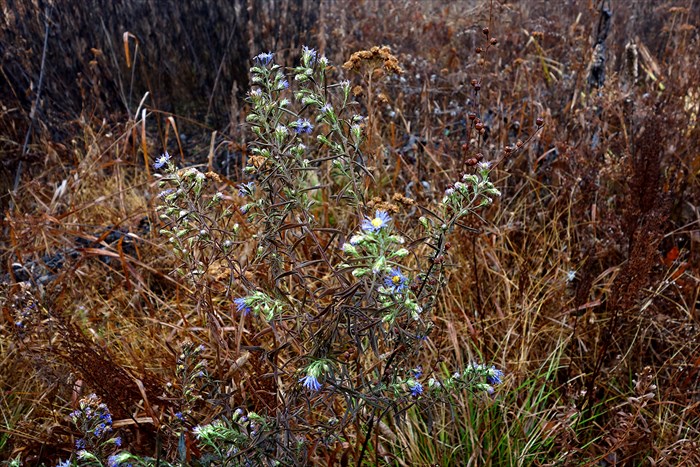
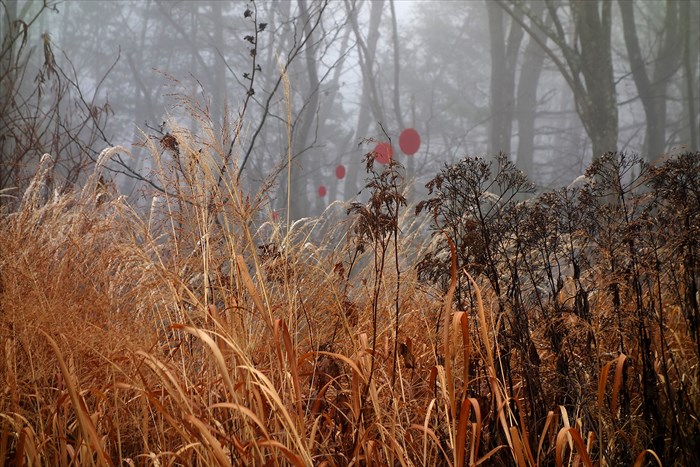
 A walk up the right-hand inner path back toward the pond.
A walk up the right-hand inner path back toward the pond.

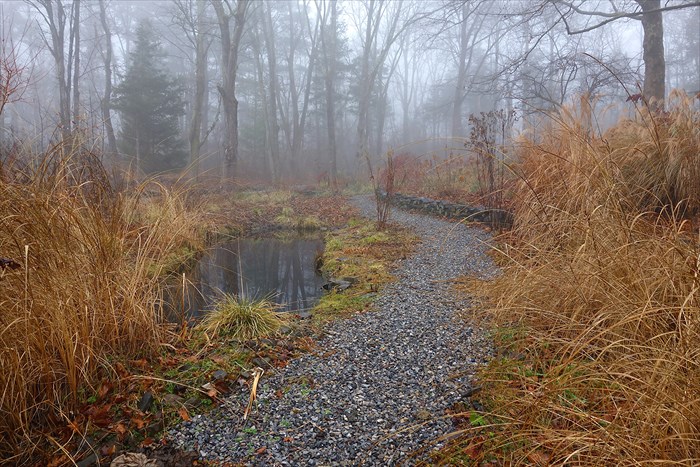
 Then turning back to see the area of the reflecting pool.
Then turning back to see the area of the reflecting pool.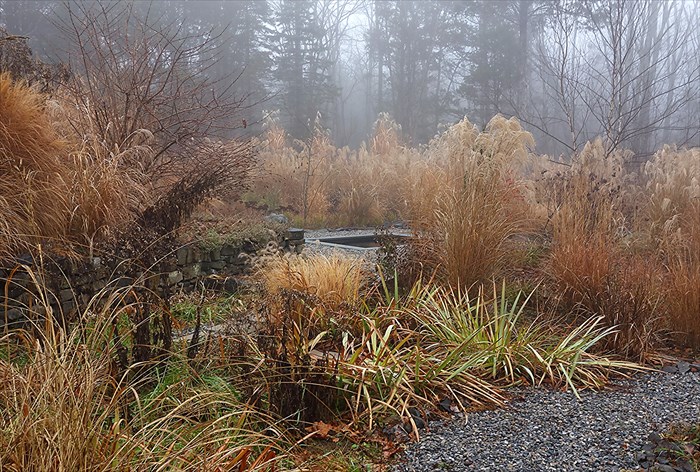

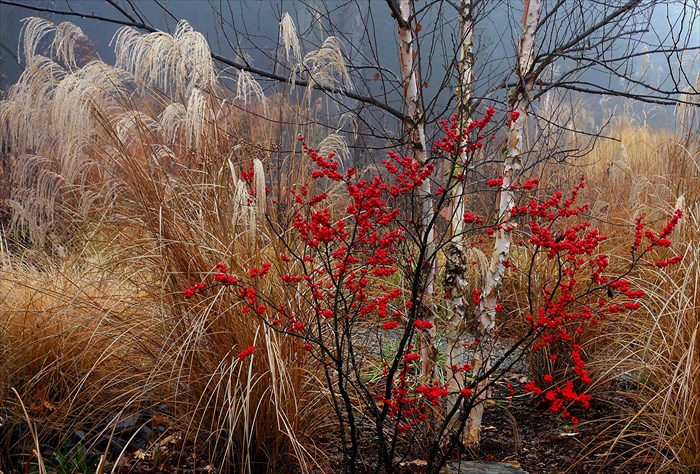
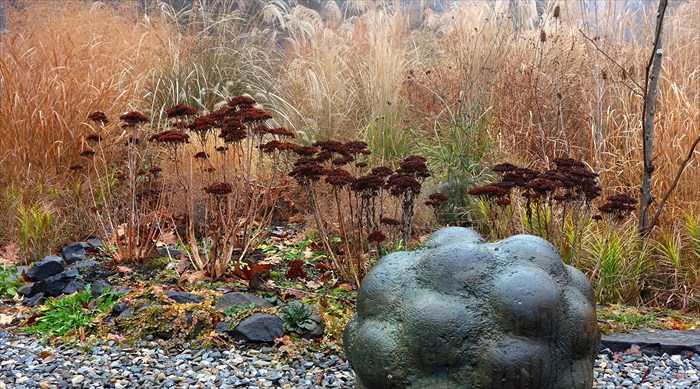
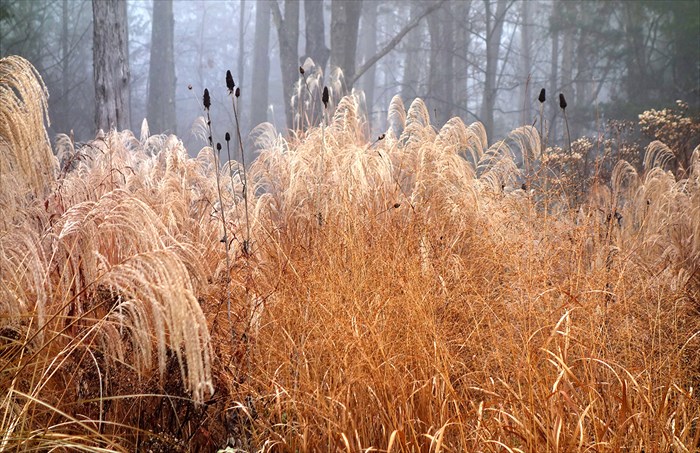
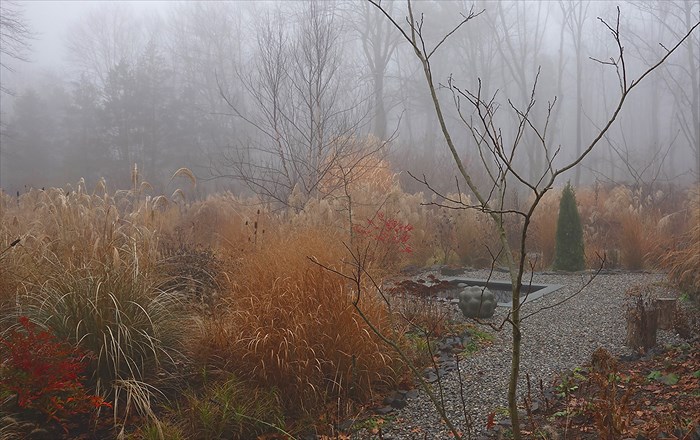
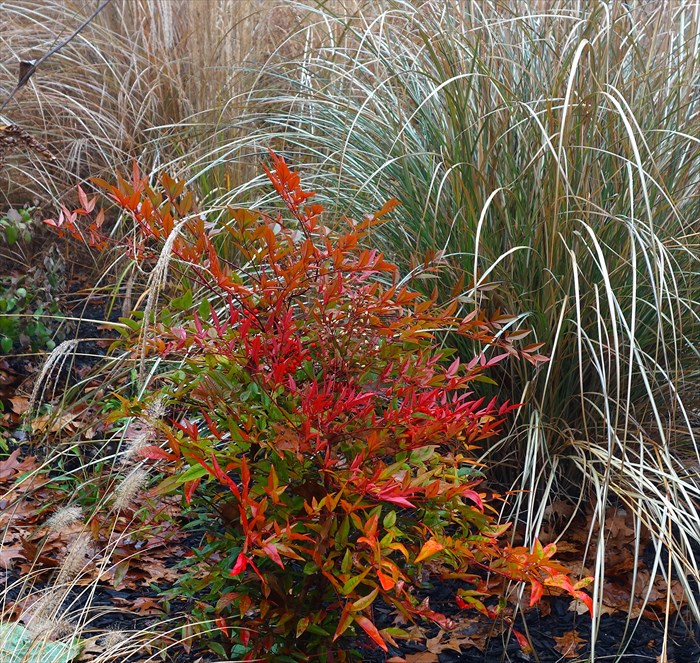
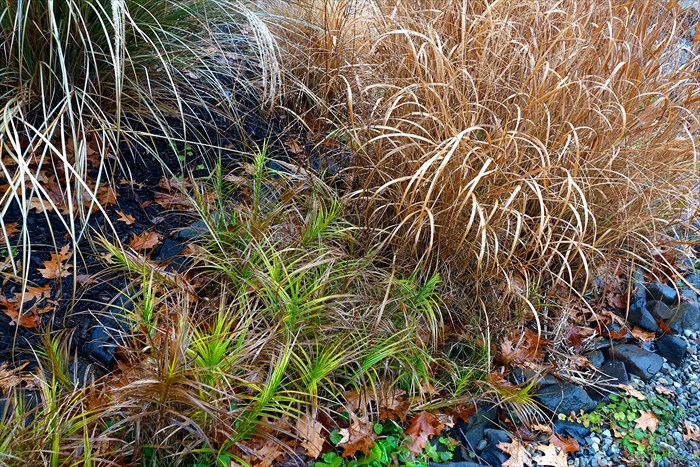
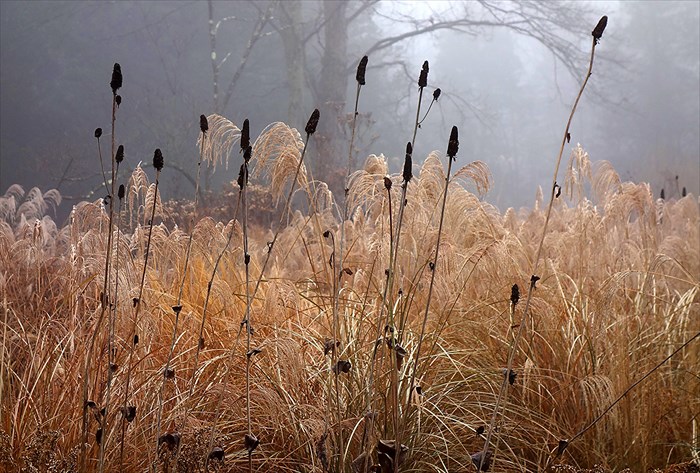
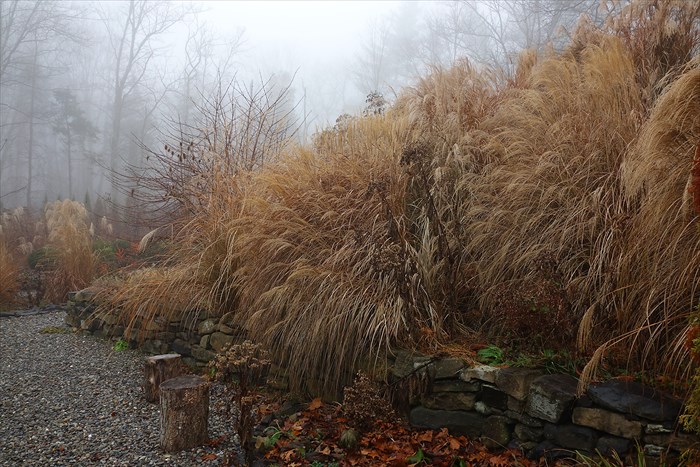
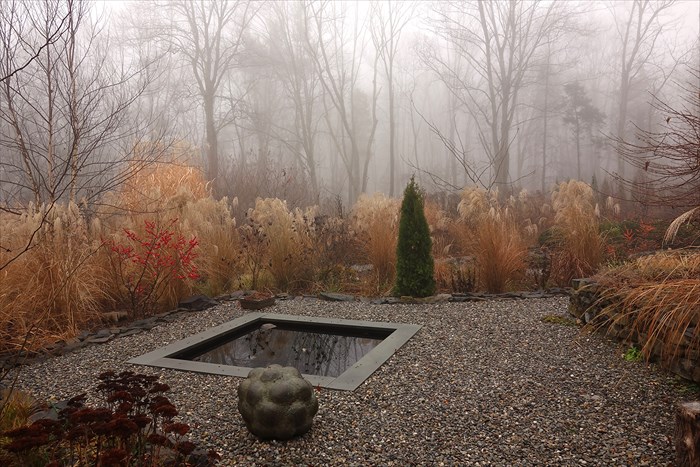
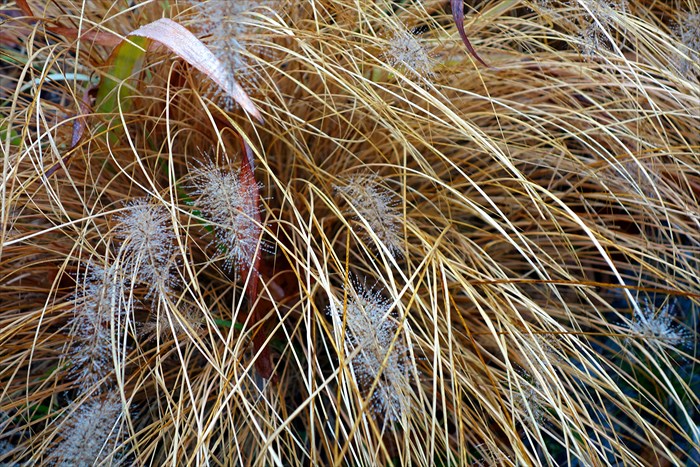 Marc Rosenquist's bronze sculpture is, for me, both a formal element and the metaphorical center of the garden, like a gravitational attractor pulling into a circular dance the multitudinous variety of living things. "The still point of the turning world ... at the still point, there the dance is."
Marc Rosenquist's bronze sculpture is, for me, both a formal element and the metaphorical center of the garden, like a gravitational attractor pulling into a circular dance the multitudinous variety of living things. "The still point of the turning world ... at the still point, there the dance is."

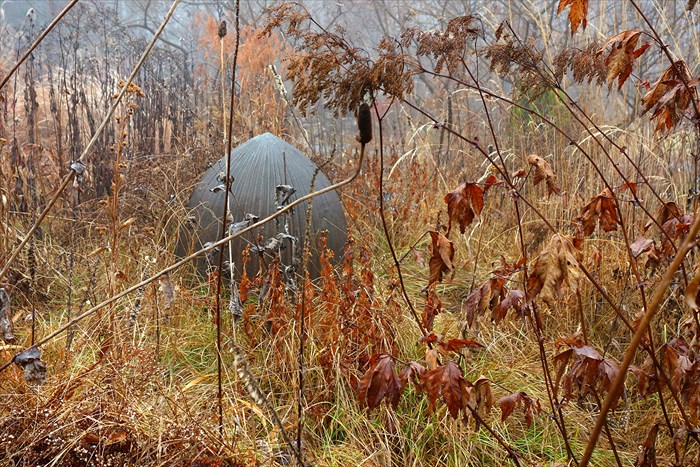
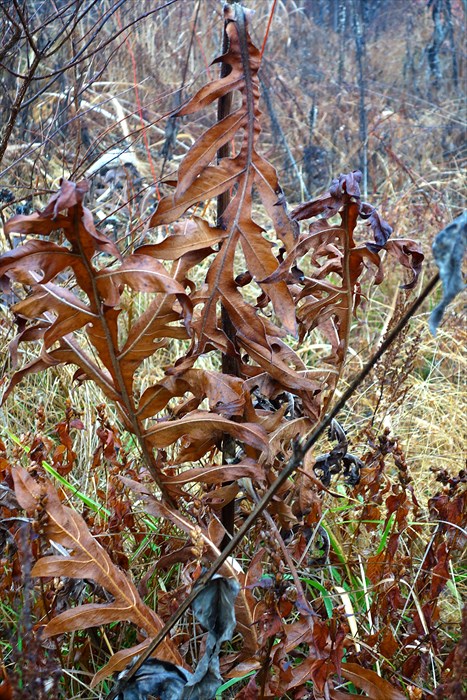
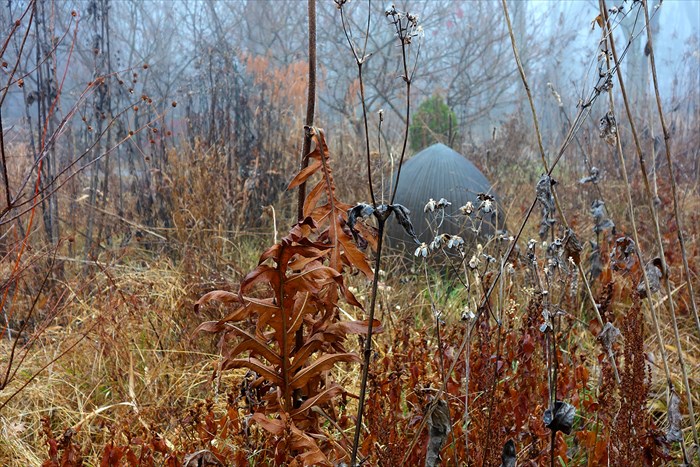 Back to the main cross path.
Back to the main cross path. A secondary path through the middle of the planted central garden. Scott Weber calls it gothic.
A secondary path through the middle of the planted central garden. Scott Weber calls it gothic. Approaching the end of the main cross axis, which curves sharply right and around the back of the garden.
Approaching the end of the main cross axis, which curves sharply right and around the back of the garden. Panicum 'Dallas Blues' turns an intense orange when wet ...
Panicum 'Dallas Blues' turns an intense orange when wet ...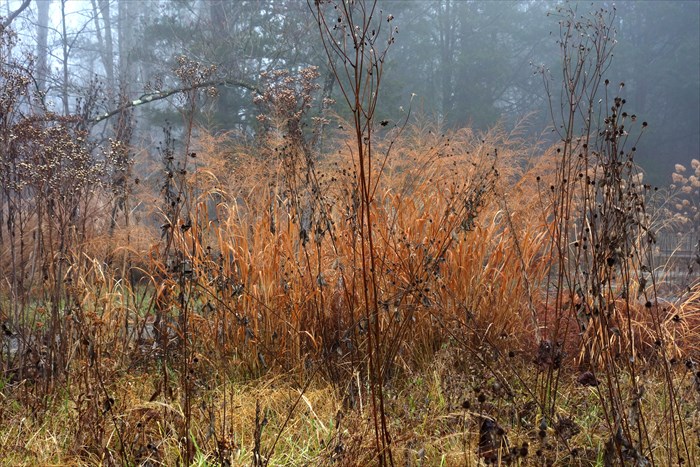 ... in dramatic contrast to the softer colors of miscanthus.
... in dramatic contrast to the softer colors of miscanthus.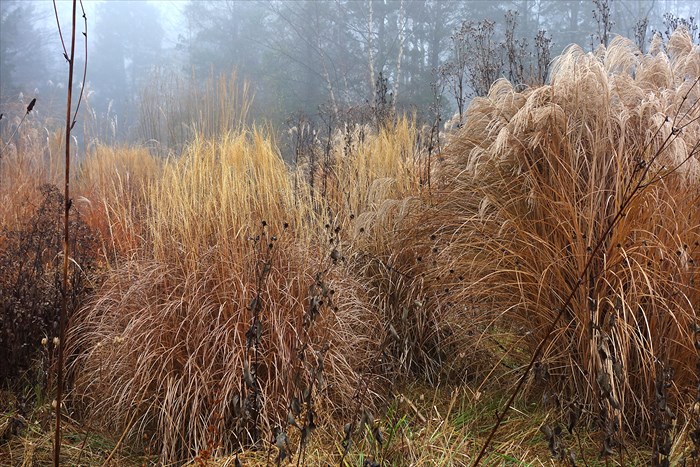 Skeletons of Aster tartaricus 'Jin Dai' and Teasel (Dipsacus fulonum) are highly ornamental and have a characteristic yellow-toned brown color.
Skeletons of Aster tartaricus 'Jin Dai' and Teasel (Dipsacus fulonum) are highly ornamental and have a characteristic yellow-toned brown color.
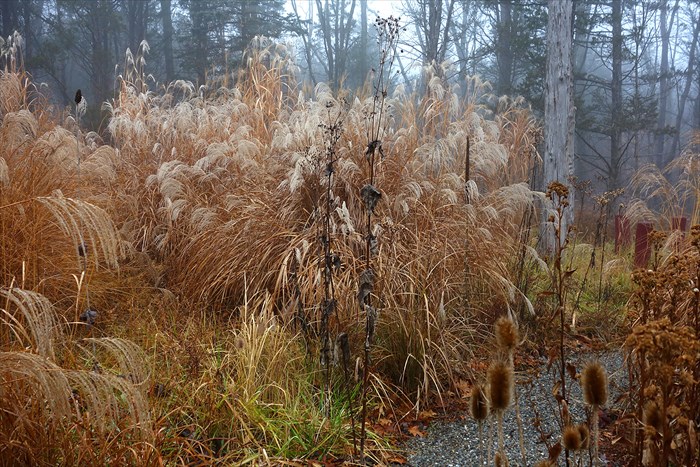
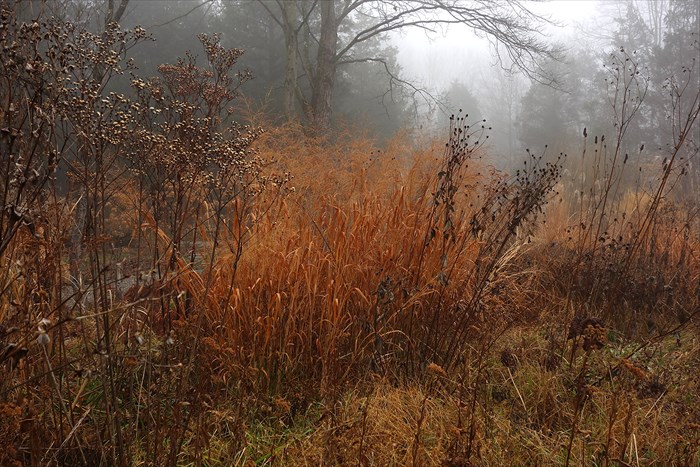
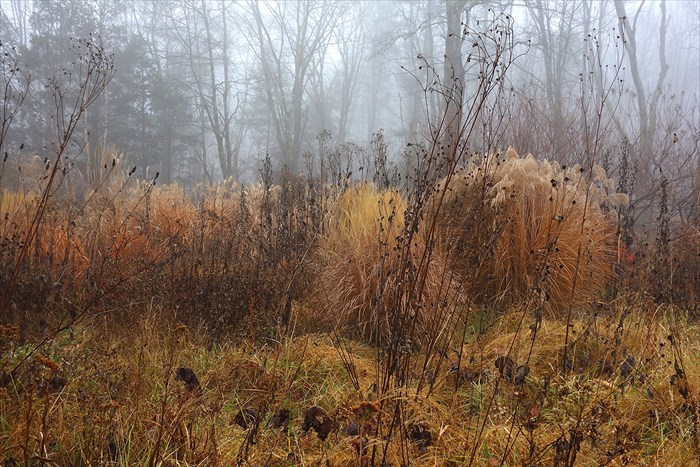
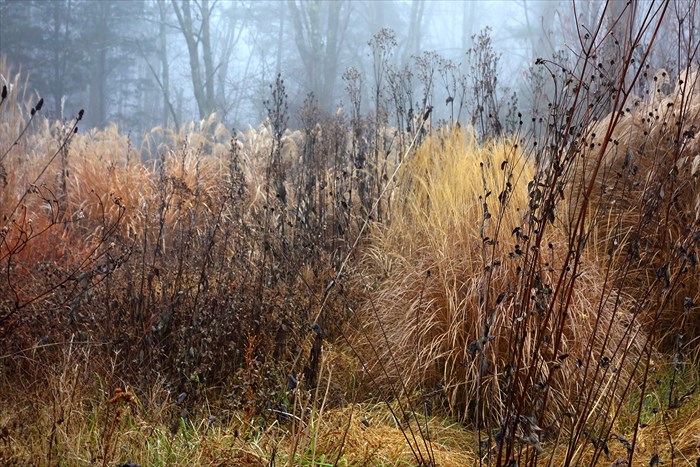
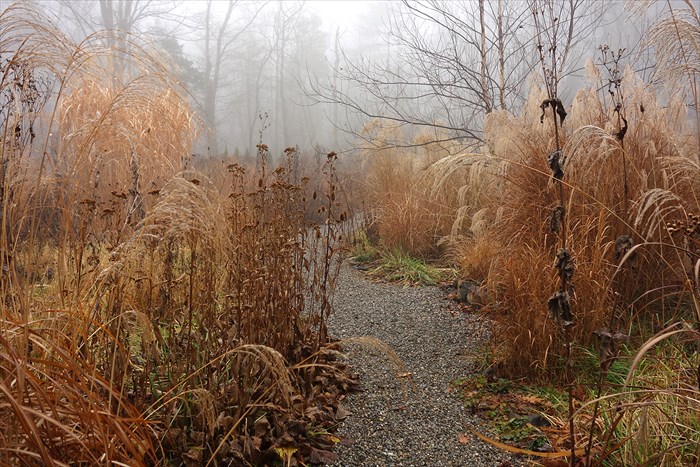 A glance up to the house really makes you feel immersed in the garden, if you don't already.
A glance up to the house really makes you feel immersed in the garden, if you don't already. One of many tall Ironweeds (Vernonia).
One of many tall Ironweeds (Vernonia).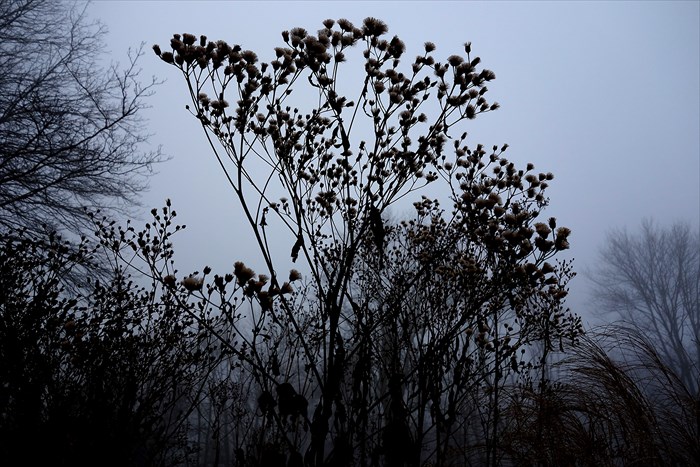 My faorvite sitting area looks rather bare in winter.
My faorvite sitting area looks rather bare in winter.

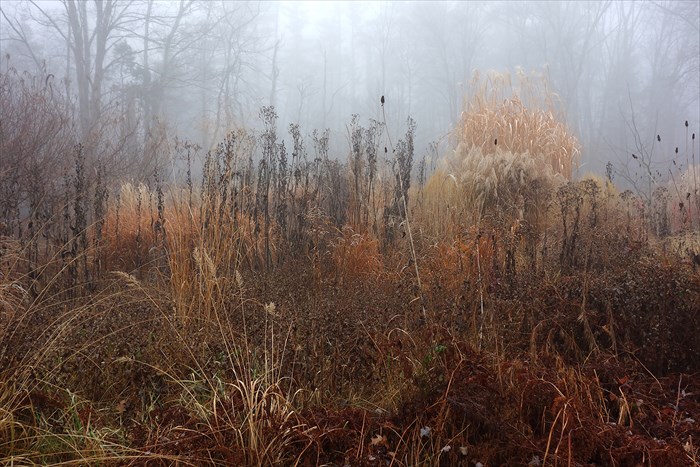

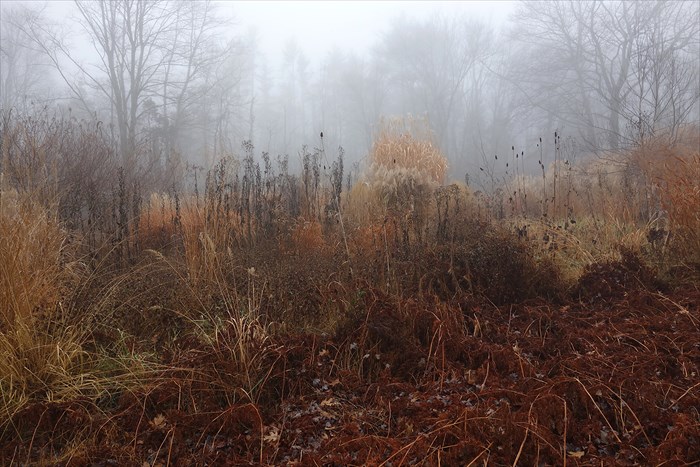
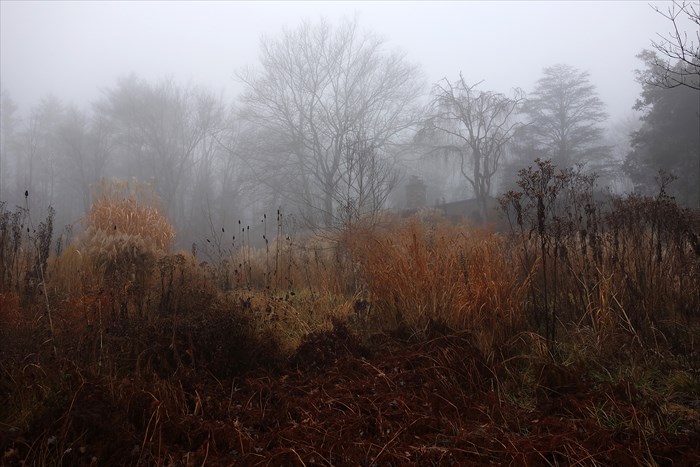
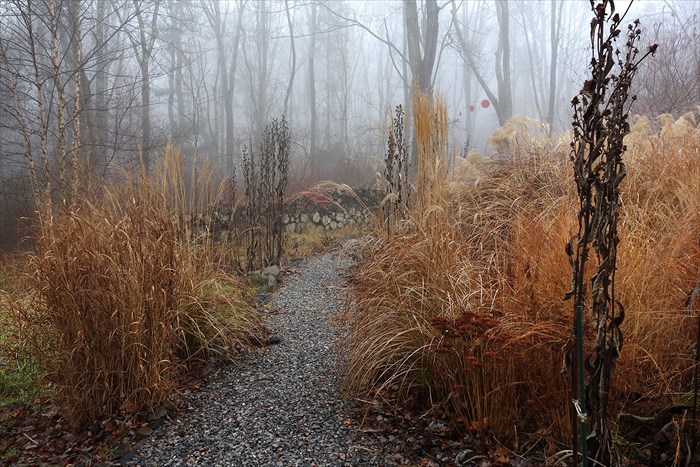



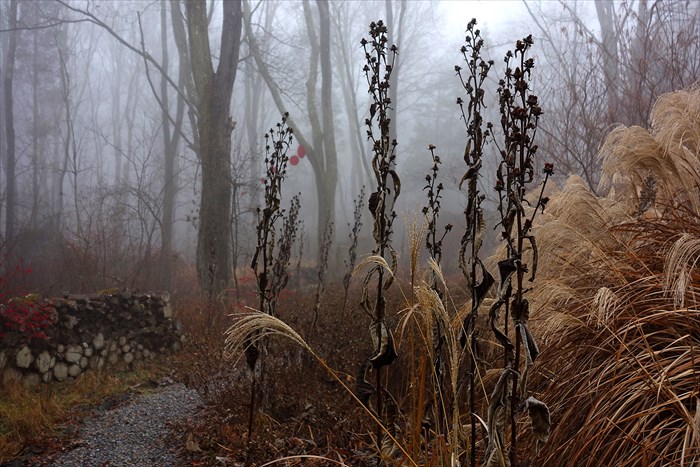
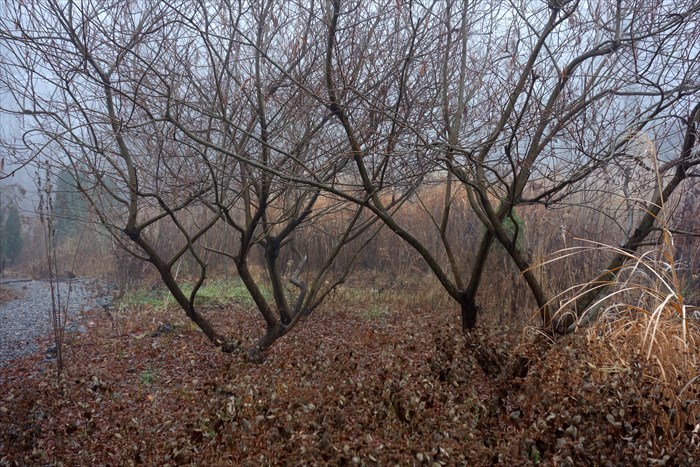
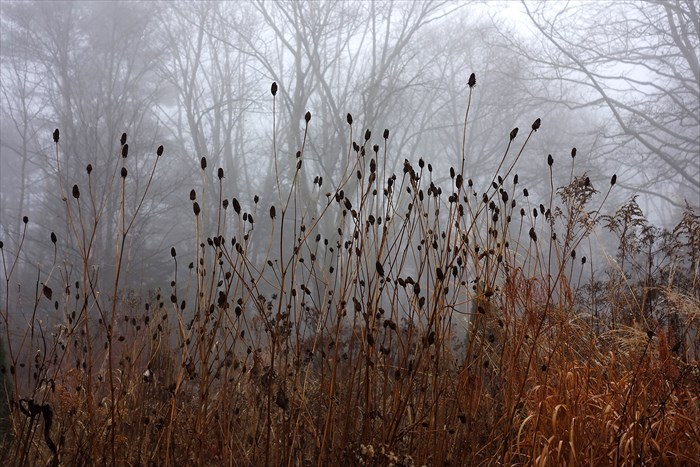
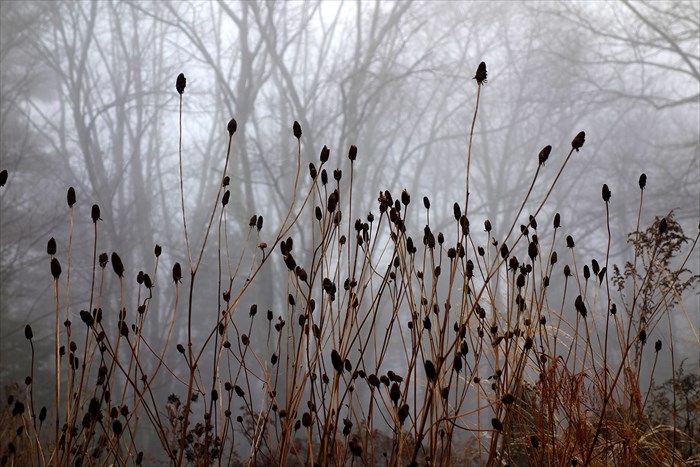 The circuit around the back of the garden completed, returning up the outer path toward the house.
The circuit around the back of the garden completed, returning up the outer path toward the house.
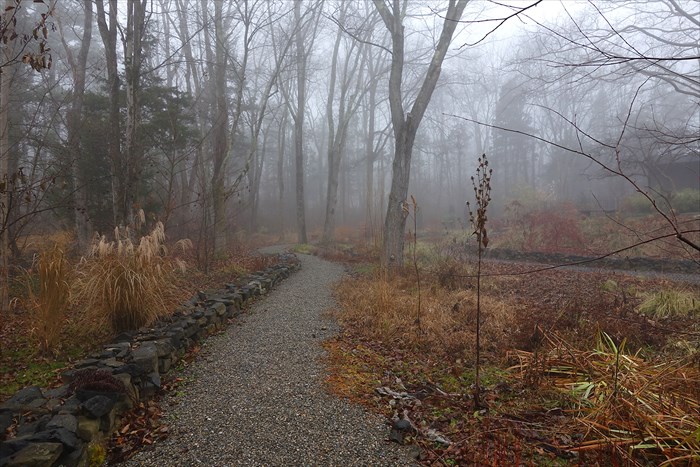
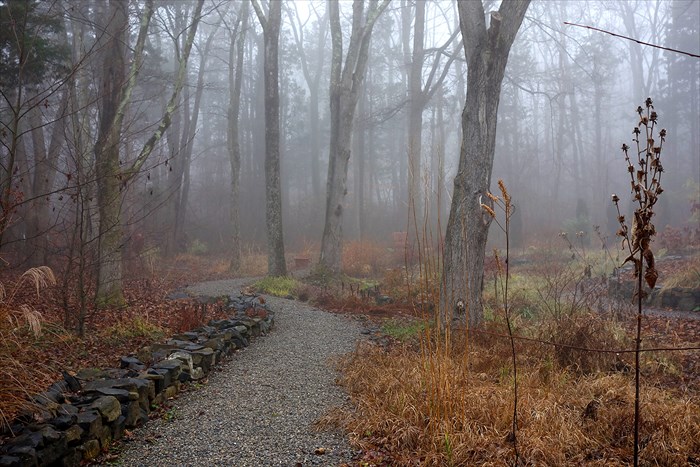
 Flame willows I got at the Swarthmore plant sale this summer.
Flame willows I got at the Swarthmore plant sale this summer.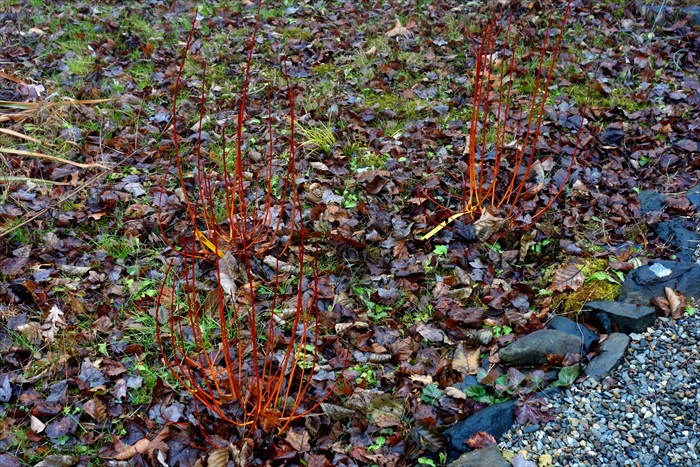 Ascending the steps on the opposite side of the garden.
Ascending the steps on the opposite side of the garden.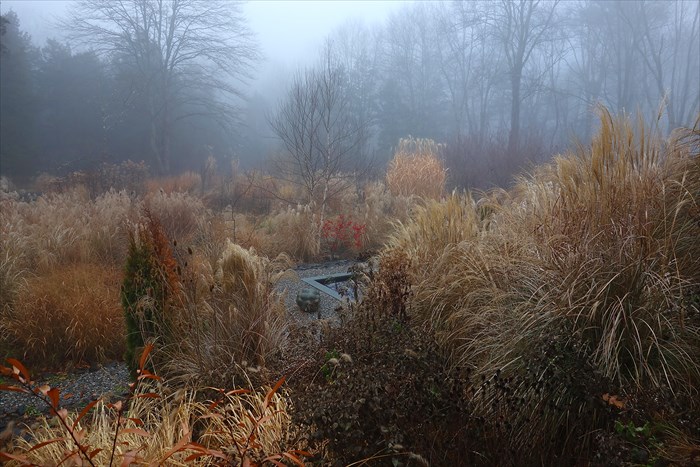


 Back "up top."
Back "up top."

